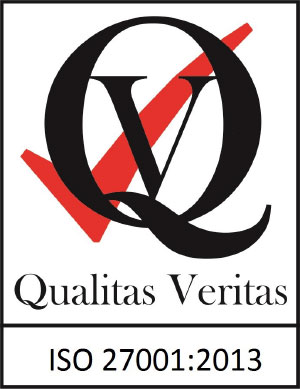
What is Brexit?
On the 23rd of June 2016, the United Kingdom voted to leave the European Union (EU) in a referendum. From this date, the European Union and the United Kingdom had 2 years to negotiate arrangements for the UK to leave. This meant that the UK was expected to leave the EU on the 29th of March 2019. Upon agreement between the UK and the European Council, this 2-year period was extended, and the UK is now expected to leave the EU on the 31st of October 2019.
What is the Transition Period and why is it so important?
When the UK leaves the EU, the plan is that a 21-month transition period will apply. During this transition period current trading arrangements between the UK and the EU will remain in place. The UK would have to abide by all the EU’s rules and would be subject to the rulings of the EU courts but will have no say on the matters. The desired outcome of this transition period is to give time for a new deal to be worked out after the UK leaves, on the future relationship between the UK and the EU. If the EU and the UK cannot reach a withdrawal agreement the UK would leave the EU, and everything associated with that would come to an end and there will be no transition period resulting in a ‘No Deal’ Brexit.
What are some the outcomes of a ‘No Deal’ Brexit?
Given the current political situation in the UK there is a significant risk of a ‘no deal’ Brexit. In the event of a ‘no deal’ Brexit, the United Kingdom would immediately leave the European Union with no agreement about the transition period. Meaning the UK would leave the single market and customs union arrangements designed to help trade between EU members by eliminating checks and tariffs. It would also mean leaving EU institutions such as the European Court of Justice and Europol, its law enforcement body. Membership of dozens of EU bodies that govern rules on everything from medicines to trademarks would end. The UK would also no longer contribute to the EU budget which is currently about £9bn a year.
Likely VAT effects of a ‘No deal’ Brexit
The UK government has confirmed it is aiming to keep VAT procedures for goods and services closely aligned to current rules, where possible. If the UK leaves the EU with no agreement, then there will be changes to procedures and current VAT rules that apply to transactions between the UK and EU member states.
Currently, an EU registered business that has paid VAT in another EU member state can claim the VAT back from the other EU member state under the EVR/8th Directive processes. After Brexit this will no longer be relevant, meaning businesses that incur UK VAT will have to file paper based 13th Directive claims. Generally, this is a slower process compared to the EVR/8th Directive.
Distance selling thresholds will no longer apply in relation to the supply of goods from EU businesses to the UK and vice versa. Instead, all sales from the UK to EU Members States will be subject to import VAT and customs duties by the customer.
VAT refund procedure
If the UK leaves the European Union without a deal, electronic EU VAT refund claims to and from the UK will no longer be possible. HMRC will close the UK portal for new claims at 11 pm on the 31st of October 2019, but you will still be able to view previous claims. After this the HMRC will not be able to send the claim on to the relevant EU member state, and the country’s individual processes will have to be followed instead. Which means you will need original invoices/receipts. If your business doesn’t keep paper-based records at the moment, it may be a good idea to start keeping them on relevant purchases until it is confirmed what is going to happen. This will be the case for UK businesses that have incurred VAT in the EU and vice versa.
UK Businesses
As the UK will no longer be an EU Member State, UK business will no longer have access to the EU VAT refund system, but will still be able to claim refunds of VAT from EU member states. Currently UK companies file their claims for an EU VAT refund electronically via the HMRC’s VAT refund portal, the request is then transmitted electronically to the relevant EU tax office.
If there is a no deal this will no longer be the case and UK businesses will have to file claims under the 13th directive to each EU member state where VAT was incurred. In turn some EU member states will require reciprocal agreements to be put in place to allow applications to be made. The VAT reclaim process varies across the EU so UK businesses will need to make themselves aware of the processes in the individual countries where they incur costs and want to claim a refund.
EU Businesses
As it stands an EU based company files its claim for a UK VAT refund electronically via their national VAT Refund portal. After it is confirmed that the necessary data has been included, the request is then passed electronically to HMRC which informs the applicant of its decision. After the UK leaves the European Union, EU businesses wishing to make VAT refund claims to the UK will have to do so by using the existing processes for non-EU businesses. Currently this involves a paper-based application with a requirement for all original invoices/receipts.
How can Global Tax Reclaim help?
Brexit is fast approaching and the outcome is still unclear, but what is clear is VAT obligations will be in place before, on and after October 31st, 2019. Global Tax Reclaim will keep track of your returns and ensure your Brexit risk is managed reducing any unavoidable Indirect Tax miss in the UK. Our systems are ready to connect with your ERP system/data feed, retrieve raw reports for recovery and compliance. Keeping you informed, as well as providing a clear audit trail for compliance. We are also here to help review any likely impacts of Brexit on your business and therefore minimizing any negative VAT impact as much as possible. UK businesses can contact us to answer any questions you may have about the various VAT reclaim processes across the individual countries within the EU.



 Request a Free
Request a Free
 Request a Free
Request a Free







